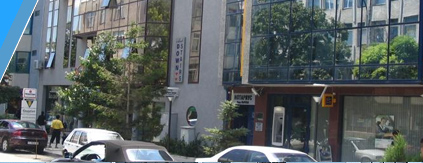|
|
ABOUT SLIVEN
The town of Sliven (population 110 240 people, 270 m above sea level) is situated in the eastern part of the Gornotrakiiska valley at the immediate foot of Sliven Balkan (Eastern Balkan Mountains). Sliven is located 270 km east of Sofia, 28 km northwest of Yambol, 70 km northeast of Stara Zagora, 75 km east of Kazanlak and 114 km west of Bourgas.
HISTORY
Most probably the name of Sliven derives from the location of the town, i.e. fusion of the field and the mountain as well as the three rivers Asenovska, Selishka and Novoselska. The town sprang up in the period VII – X century on an old military road from the Danube River to the mountain pass Vratnik (Jelezni vrata) in the Balkan Mountain to Tzarigrad.
Idrisi, an Arabian geographer was the first one to give information about the town in 1153, calling it Istilifunos. Later it became known with the following names – Silimno, Slivno, and during the Ottoman rule – Islimie, Islivne. Father Paisiy mentioned it for the first time as Sliven in his “Istoria Slavianobulgarska” (Slavonik and Bulgarian History).
During the first decades of the Ottoman rule Sliven enjoyed the privilege of being a town where people were rearing falcons and guarding the Balkan passes. It also gained popularity for the weaving of the woolen material called “kebe”. In 1828 there were about 20 000 inhabitants in the town but after Sliven was liberated from Turkish yoke in the Russian-Turkish war more than 15 000 Bulgarians from the region left with the withdrawing Russian soldiers and settled to live in Romania, Bessarabia and South Russia. In 1872 the population of Sliven was 25 000 inhabitants.
Sliven grew as a crafts and trading center, making use of the waterpower of the rivers running close by. The craft of the homespun cloth making was best developed. More than 400 trades would annually visit the town to buy thousands of meters of woolen material. The craft of rifle making came second in importance. In 1836 the first textile factory in Bulgaria was built in Sliven, that of Dobri Jeliazkov. It was a three-storey building with 20 spinning machines, 6 mechanical looms and 500 workers. Traders from Turkey, Poland and Hungary would come to the annual fair in Sliven. Nowadays the building of the factory is declared a monument of culture of national significance.
During the Revival period Sliven became famous as “the town of the hundred chieftains” – Inge, Zlati, Kara Subi, Radoi, Hristo, Konda, Hadji Dimitar, Panaiot Hitov, Taniu Voevoda and many other. Georgi Ikonomov, one of the apostles of the April Rebellion, was born in the town, so were Sava Dobroplodni, Dr. Ivan Seliminski and Dobri Chintulov. After the liberation the textile industry continued to develop and shape the economic image of the town.
LANDMARKS
When visiting the town of Sliven one should call on the town museum of history, the museum for Renaissance art where a permanent exposition of Renaissance works and masterpieces is arranged. The Hadji Dimitar museum house is situated in the southwestern part of the town and comprises a complex of several buildings restored during different periods of time. It includes the native home with its interior, the inn and the rest of the farmhouses. The 19 century Sliven life style house museum is lodged in a building from 1813 having a very interesting architecture. Modern Bulgarian art is on display in the Sirak Skitnik art gallery.
The monument of Hadji Dimitar was built in 1935 in the center of the town. The figure of the legendary leader stands on a rectangular column. At the foot of the monument in special niches one can see the busts of other outstanding renaissance people from Sliven.
The historical elm tree approximately 600 years old is located in the center of Sliven and has probably witnessed many of the events in the history of the town. There are a lot of Christian temples in Sliven, most outstanding of all church “St. Dimitar”, situated in the center of the town.
TRANSPORT
From Sliven there are regular bus lines to the towns of Yambol, Nova Zagora, Karnobat, Aitos, Bourgas, Elena, Veliko Tarnovo and to the smaller villages and settlement in the district. The town is a major railway station on the main railway line Sofia – Karlovo – Bourgas. There is a well-arranged bus and trolley transport in Sliven.
The seat-lift station located in the northern part of the town, immediately at the foot of the mountain will take up to more than 600 m everyone who is willing to roam the Sliven Balkan.
SURROUNDING AREAS
The mountain place Karandila is located northeast of Sliven, among century-old forests. Here one will discover National Park “Sini Kamani”, where there are many interesting rock formations such as Halkata (the ring). The area offers excellent opportunities for rest, sports and tourism. There are ski-tracks with two ski tag lines, a football field and a lake. Karandila is a point of departure for a number of well-marked tourist and eco-trails.
The mineral baths of Sliven are situated only 12 km southwest of Sliven, in the village of Zlati Voivoda, near the road to Nova Zagora. People use the mineral water of the balneology center to cure diseases of the locomotary system, the peripheral nerve system, stomach, intestines, liver and gall-bladder.
Aglikina Polyana – the meadow of Aglika is 38 km northwest of Sliven, in Elena Balkan. It is a historical area that entered the Bulgarian national history as the most popular gathering place of chieftains. It is a wide meadow surrounded by venerable oak and beech trees.
Population: | Over 100000 | To see the exact location of the city and to find out more info, please visit the following web site: BGmaps
|
|
|
|


